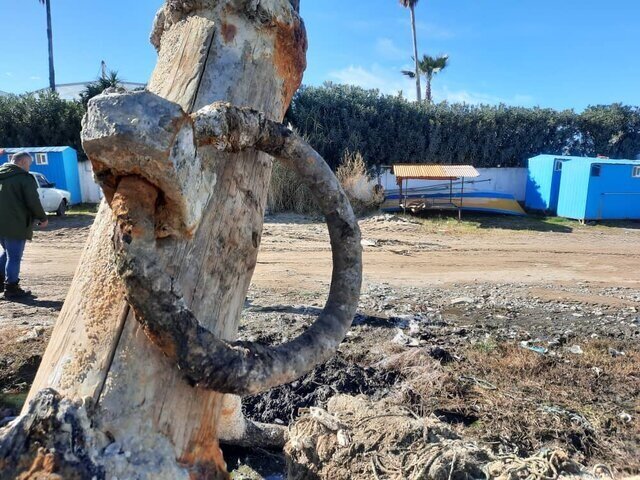Caspian Sea survey finds no shipwreck remains

TEHRAN – A recent underwater archeological survey has found no traces of a historical ship in the Caspian Sea bed, ILNA reported on Thursday.
An underwater archeology research group formed after discovering a huge historical anchor in the Caspian Sea to study the underwater environment and search for a historical ship drowned in the sea, said Saman Surtiji, who presided over the project.
However, the group has found no evidence of the vessel and has concluded its research, he noted.
The survey was conducted in absolute darkness and extreme cold due to the turbidity of the water, he added.
As the project’s budget was limited, advanced measuring devices were not available to identify the seabed more accurately, so the group members used the usual method to identify the seabed, however, no traces of the ship or other cultural remains were discovered as a result of these investigations, he mentioned.
Although the anchor may be an abandoned piece of a historic ship, specialized measuring devices can confirm the presence of a broken ship below the surface of the sea, he explained.
Back in January, ISNA reported that a historical anchor located in the bed of the Caspian Sea was trapped inside the net of fishermen near the shores of the city of Noor, northern Iran.
Measuring 3,6 meters in length and made from wood and iron, the anchor was covered by sea sediments and needed restoration.
Initial estimates suggested that the anchor might be belonging to a war vessel.
According to Encyclopedia Iranica, exploitations of the sea developed only slowly and gradually after the Islamic conquest of Persia. During almost two centuries the mountainous barrier of the southern Caspian sheltered important pockets of indigenous resistance and several independent Zoroastrian principalities, which blocked the predominant Persian Islamic civilization of the plateau from access to the sea.
In addition, commercial relations between the Muslim successors to the Sasanians and the inhabitants of the northern steppes were at first conducted via the established stages of the land route to the west of the Caspian. This orientation did not favor maritime activity or even a quest for detailed knowledge of the sea.
As mentioned by Iranica, before the Muslim conquest of Persia the Caspian Sea was little known and little used. Throughout the entire period, it remained on the margins of the great civilizations, far from the centers of population, and the history of geographic knowledge about it is the history of a series of trials and errors. The Assyrian troops of Adad-Nirari III (805-782 BC) were acquainted with it and called it the “great sea of the rising sun.”
Furthermore, the Greeks became aware of its existence at an early date through the reports of merchants from their Black Sea colonies, who transmitted some detailed information; as early as the 5th century BC. Herodotus recognized that the Caspian was a landlocked sea. That the Greeks’ knowledge was essentially limited to the southern part of this body of water, however, is attested by the two names by which it was known.
Bounded by the Caspian Sea and the Republic of Azerbaijan on the north, Gilan, in the far past, was within the sphere of influence of the successive Achaemenid, Seleucid, Parthian, and Sassanid empires that ruled Iran until the 7th century CE.
ABU/AM
